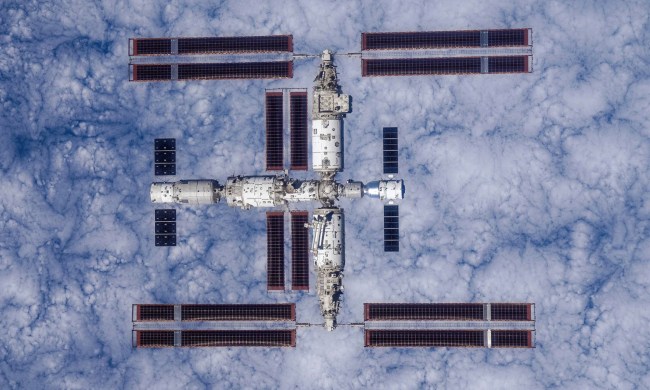Two spacewalkers at the International Space Station (ISS) activated the facility’s new robotic arm for the first time on Thursday, April 28.
Russian cosmonauts Oleg Artemyev and Denis Matveev concluded their spacewalk at 6:40 p.m. ET after 7 hours and 42 minutes outside the ISS, with much of that time spent working on the European Robotic Arm (ERA).
The ERA arrived at the station in July last year but it remained covered with thermal blankets until Thursday.
NASA shared footage (below) of the two cosmonauts some 250 miles above Earth as they worked to release the robotic arm from its restraints ahead of its first workout.
The station's new robotic arm from @ESA has been released from its restraints on the Nauka module and is now in motion. https://t.co/yuOTrYN8CV pic.twitter.com/5h7PHORXuM
— International Space Station (@Space_Station) April 28, 2022
Getting to this stage has been a long time coming. The ERA was designed more than 30 years ago, and various technical issues over the last 20 years caused it to miss three planned missions to the ISS.
But now European Space Agency (ESA) engineers can finally celebrate the arm’s first activation in space.
The new robotic arm is about 11 meters long, weighs 1,390 pounds (630 kilograms), and includes seven joints that offer a high degree of maneuverability.
The ERA will be used mainly to install, remove, and replace experiment payloads and large components; transfer smaller payloads in and out of the station via the Russian airlock; transport spacewalkers from one part of the ISS to another “like a cherry-picker crane”; and monitor and inspect the exterior of the space station using its four cameras.

While the space station already has two operational robotic arms — Canada’s Canadarm2 and the Japanese Experiment Module Remote Manipulator System — the ERA is the first to be deployed outside the Russian section of the ISS, and so will give spacewalkers greater reach when conducting maintenance and upgrade work outside the facility.
Dubbed “the smart spacewalker,” the new arm is, according to ESA, “made for walking,” as it has the ability to move hand-over-hand between fixed base points.
“Moving hand-over-hand around the Russian parts of the station, the European Robotic Arm will bring more freedom, more flexibility, and more skills to space operations,” the agency said of its new ISS component.
Work to get the ERA fully operational will take five spacewalks in all. The first of these took place last week and involved the installation of a control panel. Thursday’s was the second and involved moving the arm for the first time in space, while the third spacewalk is currently set for May.


